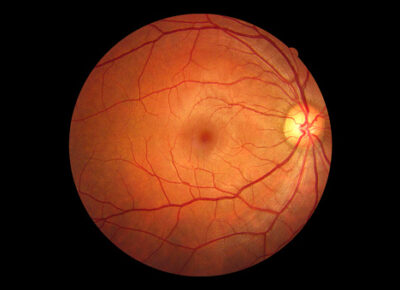 This is Dr. Della Torre’s area of expertise. Here are a few common retinal conditions and the treatments we offer.
This is Dr. Della Torre’s area of expertise. Here are a few common retinal conditions and the treatments we offer.
AGE-RELATED MACULAR DEGENERATION (ARMD or AMD) –a disease of aging that causes damage to the macula, the part of the retina responsible for clear central vision. This disease is the leading cause of vision loss in older adults. While it may not lead to total blindness, it can rob you of your central vision, leaving your peripheral vision intact. Macular degeneration is typically classified as being dry or wet. Dry AMD has few symptoms in the early stages, but as the disease progresses, it can cause symptoms such as blurred vision and a dull appearance to objects. When Dry AMD is diagnosesd we often recommend vitamin supplementation and other lifestyle modifications to reduce you risk of disease progression. Wet AMD indicates that an abnormal blood vessel is causing bleeding or leakage of fluid into or underneath the retina. Wet AMD is a more rapidly progressing form of the disease which requires treatment to reduce your risk of vision loss. Symptoms include blurriness, loss of brightness/color, distortion, dark or blank spots in the central vision.
DIABETIC RETINOPATHY-a disease caused by damage to blood vessels of the retina in people with Type 1 and Type 2 diabetes. It is the leading cause of blindness in working age Americans. Most often, diabetic retinopathy has no symptoms until the damage to your eyes is severe. Symptoms of diabetic retinopathy include: sudden vision loss or slow vision loss over time, floaters, shadows and/or missing areas of vision. Many people with early diabetic retinopathy may have no symptoms before major bleeding occurs in the eye. This is why everyone with diabetes should have regular eye exams.
RETINAL VEIN OCCLUSIONS (RVO)– a disease that occurs when the small veins that carry blood away from the retina are blocked, usually by hardening of the arteries. You may be at risk of developing RVO if you have diabetes, high blood pressure, atherosclerosis or other eye diseases like glaucoma. Symptoms of RVO include: sudden blurring or loss of vision in some or all of the eye. RVO can also cause other eye problems which could ultimately lead to blindness.
“FLASHES AND FLOATERS” DUE TO POSTERIOR VITREOUS DETACHMENT (PVD)- Developing a PVD is a normal part of the aging process which can increase your risk for developing a retinal tear or retinal detachment. The cavity of the eye is filled with a gel known as the vitreous. As we age the vitreous gel slowly liquefies. When the liquefaction process reaches as critical point the vitreous begin to separate its normal adhesions in the back of the eye. When this occurs it is typical to see “floaters” which look like dots or strands that float with eye movement. Some individuals will also see flashes of light in their peripheral vision. The presence of flashes indicate that the vitreous gel is pulling on the retina and that you are at higher risk of having a retinal tear. It is important to be examined as soon as possible after developing new flashes or floaters to ensure that you have not developed a retinal tear or detachment which can lead to permanent vision loss.
VITREOMACULAR ADHESION – Sometimes when the vitreous gel separates as described above there is an incomplete separation. The vitreous gel can pull on the fovea which is the area of the eye responsible for your sharp central vision. Symptoms can include distortion and/or a small blind spot in the center of your field of vision.
Dr. Della Torre, who is fellowship trained in Medical Retina, offers the following treatments and diagnostic testing for the above listed retinal conditions including:
- Monitoring progression of disease using the sophisticated diagnostic testing equipment located in Our Technology section, including spectral domain optical coherence tomography and fundus autoflouresence.
- Intraocular injections with anti-vascular endothelial growth factor drugs, such as Lucentis, Eylea, Beovu and Avastin, to control disease progression
- Intraocular injections with steroids to control severe inflammation in the eye
- Intraocular injection of Jetrea for symptomatic vitreomacular adhesion
- Laser surgery in our office for retinal tears, retinal swelling and vitreous hemorrhage (bleeding in the back of the eye))
- Fluorescein angiography